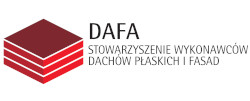Open Access (Artykuł w pliku PDF)
Effectiveness of selected noise mitigation measures used on railway lines in Poland
mgr inż. Marcin Wrótny, Politechnika Lubelska, Wydział Budownictwa i Architektury
ORCID: 0000-0002-9353-3396
dr hab. inż. Janusz Bohatkiewicz, prof. uczelni, Politechnika Krakowska, Wydział Inżynierii Lądowej
ORCID: 0000-0002-9659-2666
Adres do korespondencji: Ten adres pocztowy jest chroniony przed spamowaniem. Aby go zobaczyć, konieczne jest włączenie w przeglądarce obsługi JavaScript.
DOI: 10.15199/33.2023.08.08
Oryginalny artykuł naukowy
Streszczenie. W artykule porównano wybrane rozwiązania ochrony przed hałasem stosowane na liniach kolejowych w Polsce i przedstawiono wyniki badań wielkości redukcji hałasu kolejowego przez cztery typy zabezpieczeń akustycznych. Najlepsze wyniki redukcji poziomu dźwięku uzyskano w przypadku zastosowania kombinacji podkładek podpodkładowych z tłumikami szynowymi, a najmniej skuteczną metodą okazały się podkładki amortyzacyjne. Ponadto zbadano zależność pomiędzy wielkością redukcji hałasu a prędkością pociągów. Analiza danych jednoznacznie wskazała zwiększenie wartości redukcji hałasu wraz ze wzrostem prędkości pociągu.
Słowa kluczowe: hałas kolejowy; zabezpieczenia akustyczne; ochrona przed hałasem; strefa emisji hałasu.
Abstract. The article presents the results of a study on the reduction of railway noise by four types of noise mitigation measures. The aim of the study was to compare selected noise protection solutions used on railway lines in Poland.The best results were obtained using a combination of sleeper pads with rail dampers, while the least effective method turned out to be rubber damping pads. In addition, the relationship between noise reduction and train speed was examined. Analysis of the data clearly indicated an increase in the value of noise reduction with increasing train speed.
Keywords: railway noise; noise mitigation measure; noise protection; noise emission zone.
Literatura
[1] World Health Organization. Burden of Disease from Environmental Noise. 2011.
[2] Wrótny M, Bohatkiewicz J. Impact of Railway Noise on People Based on StrategicAcousticMaps. Sustainability. 2020; DOI: 10.3390/su12145637.
[3] Wrótny M, Bohatkiewicz J. Traffic noise and inhabitant health – a comparison of road and rail noise. Sustainability. 2021; DOI: 10.3390/su13137340.
[4] European EnvironmentAgency. Environmental noise in Europe – 2020. 22/2019. 2020.
[5] Thompson D. Railway noise and vibration: mechanisms, modelling and means of control. Elsevier. 2008.
[6] Dings PC, Dittrich MG. Roughness on Dutch railway wheels and rails. Journal of Sound and Vibration. 1996; vol. 193, no. 1, pp. 103 – 112.
[7] Valente M, KaewunruenS. Life cycle analysis of mitigation methodologies for railway rolling noise and groundbourne vibration. Journal of Environmental Management. 2017; DOI: 10.1016/j.jenvman.2016.12.075.
[8] Csortos G,Augusztinovicz F. Noisemitigation with rail lubrication device on tramline. 5th International Conference on Road and Rail Infrastructures – CETRA 2018. 2018.
[9] Zvolenský P, Grenčík J, PultznerováA, Kašiar Ľ. Research of noise emission sources in railway transport and effective ways of their reduction. MATEC Web of Conferences. 2017.
[10] Bavlna L, PultznerovaA, Zvolenský P. Possibilities of railway traffic noise reduction depending on the railway structure and construction of the rail vehicle. Logistyka. 2015.
[11] Jang S, Ryue J. Finite element analysis of rail dynamic absorber for reducing railway noise. Journal of the Korean Society for Railway. 2017; DOI: 10.7782/JKSR. 2017.20.6.726.
[12] Zhao J, Chan AHC, Burrow MPN. Reliability analysis and maintenance decision for railway sleepers using track condition information. Journal of the Operational Research Society. 2007; DOI: 10.1057/palgrave.jors.2602251.
[13] Ferdous W, Manalo A, Van Erp G,Aravinthan T, Kaewunruen S, Remennikov A. Composite railway sleepers – Recent developments, challenges and future prospects. Composite Structures. 2015; DOI: 10.1016/j.compstruct. 2015.08.058.
[14] GhorbanA, Erden S. Polymeric composite railway sleepers. ISERSE’13. 2013.
[15] Kaewunruen S, RemennikovAM. Under sleeper pads: field investigation of their role in detrimental impact mitigation. Proceedings ot the 13th International Railway Engineering Conference. 2015; pp. 1 – 17.
[16] PN-EN ISO 3095:2013-12. 2013. Pomiar hałasu emitowanego przez pojazdy szynowe.
[17] Wrótny M, Bohatkiewicz J, Bohatkiewicz-Czaicka J. Influence of using low-noise pavements on residents” perception of road noise protection. TransportationResearch PartD:Transport and Environment. 2022; DOI: 10.1016/j.trd.2022.103531.
[18] Thompson D,Wuand T, Armstrong T.Wheel/railrolling noise – The effects of non-linearities in the contact zone.ProceedingsoftheTenthInternationalCongresson Sound andVibration. 2003; pp. 1653 – 1672.
Przyjęto do druku: 25.07.2023 r.
Materiały Budowlane 08/2023, strona 38-41 (spis treści >>)




























